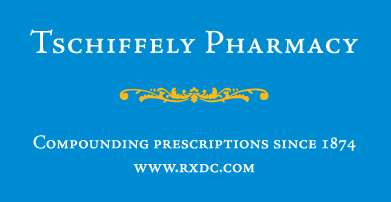
To Buy Bactroban Online Visit Our Pharmacy ↓

What Is Bactroban and How Does It Work?
Bactroban, also known as mupirocin, is an antibiotic ointment primarily used to treat bacterial skin infections. By inhibiting bacterial protein synthesis, it effectively halts the growth of bacteria like Staphylococcus aureus, which can exacerbate acne.
| Component | Function |
|---|---|
| Menu action | Inhibits bacterial protein synthesis |
| Target bacteria | Staphylococcus aureus |
While it's not traditionally marketed for acne treatment, its antibacterial properties can help reduce infection and inflammation in acne-prone areas, potentially leading to clearer skin.
Scientific Evidence Supporting Bactroban for Acne

Bactroban, also known as mupirocin, is primarily an antibacterial ointment designed to combat skin infections. When it comes to treating acne, scientific evidence remains somewhat limited. Although Bactroban is highly effective against bacteria like Staphylococcus aureus, which can exacerbate acne, its use specifically for acne treatment has not been extensively researched.
A few studies have shown some promise, indicating that the antibacterial properties of Bactroban could potentially reduce the bacterial load of Propionibacterium acnes, the bacteria primarily responsible for acne outbreaks. However, these studies often emphasized that more extensive research is needed to conclusively determine Bactroban’s efficacy for this purpose.
Dermatologists may consider Bactroban as an off-label treatment for acne, particularly in cases where bacterial infection is suspected to play a significant role. Despite the limited evidence, anecdotal experiences from patients suggest some benefits in reducing inflammatory acne lesions.
It is essential to approach Bactroban for acne with caution due to the lack of robust scientific backing. Consulting a healthcare professional before starting any new acne treatment using Bactroban is advisable to ensure safety and effectiveness.
Potential Benefits of Using Bactroban on Acne
Bactroban, primarily an antibacterial ointment, can be beneficial for acne due to its potent ability to target and eliminate bacteria. One of the major culprits behind inflamed acne lesions is the presence of bacteria like Staphylococcus aureus. By applying Bactroban, users can reduce bacterial colonization on the skin, which may help decrease the incidence of acne flare-ups.
Moreover, Bactroban's anti-inflammatory properties can soothe the skin, making red, swollen pimples less noticeable and less painful. This dual-action of reducing bacteria and inflammation may offer a unique advantage for those struggling with persistent acne.
Additionally, Bactroban's effectiveness in preventing infections in open pimples or acne scars can further contribute to clearer skin. As it reduces the risk of secondary infections, the healing process of acne can be enhanced, leading to faster recovery and potentially less scarring.
How to Apply Bactroban for Best Results

For the best results when using Bactroban on acne, begin by thoroughly washing and drying the affected area. After your skin is clean, apply a small amount of Bactroban to each pimple using a cotton swab to avoid contaminating the tube. It's crucial to follow this routine twice daily – once in the morning and once before bed. Always ensure to wash your hands before and after applying Bactroban to maintain hygiene and maximize its effectiveness on stubborn acne.
Potential Side Effects and Precautions
When considering Bactroban for acne treatment, it’s essential to be aware of potential side effects. Common reactions include skin irritation, redness, or itching at the application site. In rare cases, users might experience severe reactions such as blistering or intense burning sensations.
| Side Effect | Prevalence |
|---|---|
| Skin irritation | Common |
| Redness or itching | Common |
| Blistering | Rare |
| Intense burning | Rare |
To minimize risks, it’s crucial to conduct a patch test before full application and follow your healthcare provider’s recommendations closely. If any severe side effects occur, discontinue use and seek medical advice immediately. Safety is paramount to ensure a positive outcome with Bactroban.
Alternatives to Bactroban for Acne Treatment
When it comes to treating acne, there are several alternatives to Bactroban that have shown promise. Benzoyl peroxide is a widely recognized option, known for its ability to kill bacteria and remove dead skin cells. Another effective treatment is salicylic acid, which helps to exfoliate the skin and unclog pores. Both of these can be found in over-the-counter products and are often recommended by dermatologists.
For those seeking prescription options, topical retinoids might be worth considering. These retinoids, like tretinoin, work by promoting cell turnover and reducing inflammation. Antibiotics such as clindamycin and erythromycin offer another route, helping to combat bacterial infections that contribute to acne development.
Additionally, natural remedies like tea tree oil and green tea extract have gathered anecdotal support for their anti-inflammatory and antibacterial properties. While these alternatives can be effective, it’s essential to consult with a healthcare provider to determine the most suitable treatment for your unique skin needs.